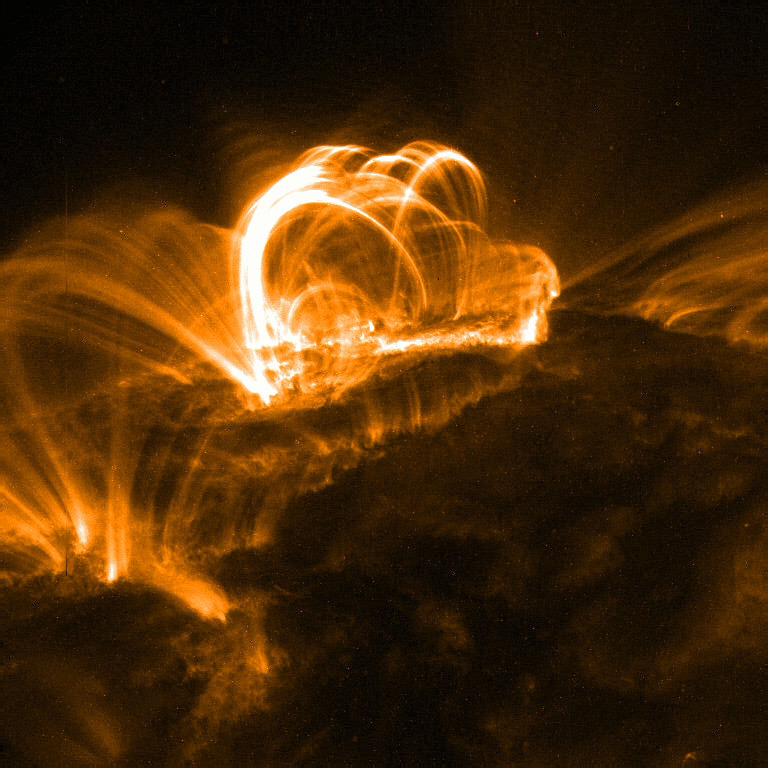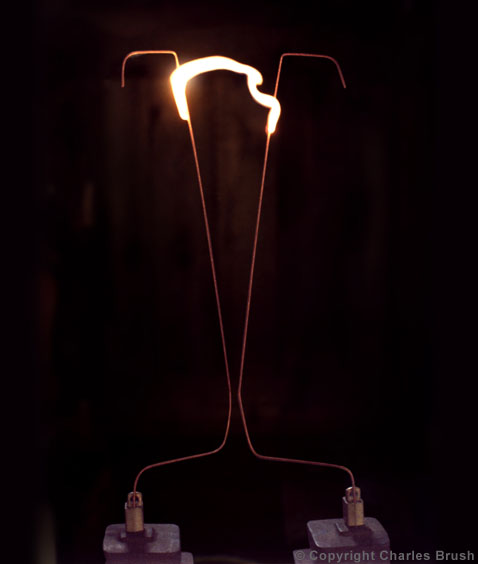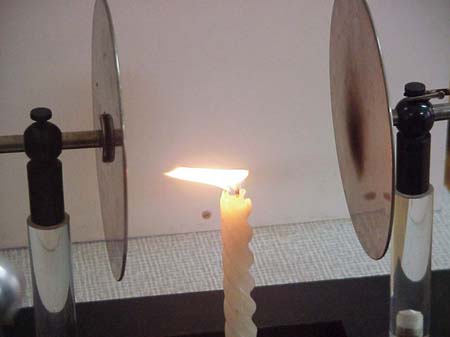Physicist: Generally speaking, by the time a gas is hot enough to be seen, it’s a plasma.
The big difference between regular gas and plasma is that in a plasma a fair fraction of the atoms are ionized. That is, the gas is so hot, and the atoms are slamming around so hard, that some of the electrons are given enough energy to (temporarily) escape their host atoms. The most important effect of this is that a plasma gains some electrical properties that a non-ionized gas doesn’t have; it becomes conductive and it responds to electrical and magnetic fields. In fact, this is a great test for whether or not something is a plasma.
For example, our Sun (or any star) is a miasma of incandescent plasma. One way to see this is to notice that the solar flares that leap from its surface are directed along the Sun’s (generally twisted up and spotty) magnetic fields.

A solar flare as seen in the x-ray spectrum. The material of the flare, being a plasma, is affected and directed by the Sun’s magnetic field. Normally this brings it back into the surface (which is for the best).
We also see the conductance of plasma in “toys” like a Jacob’s Ladder. Spark gaps have the weird property that the higher the current, the more ionized the air in the gap, and the lower the resistance (more plasma = more conductive). There are even scary machines built using this principle. Basically, in order for a material to be conductive there need to be charges in it that are free to move around. In metals those charges are shared by atoms; electrons can move from one atom to the next. But in a plasma the material itself is free charges. Conductive almost by definition.

A Jacob’s Ladder. The electricity has an easier time flowing through the long thread of highly-conductive plasma than it does flowing through the tiny gap of poorly-conducting air.
As it happens, fire passes all these tests with flying colors. Fire is a genuine plasma. Maybe not the best plasma, or the most ionized plasma, but it does alright.

The free charges inside of the flame are pushed and pulled by the electric field between these plates, and as those charged particles move they drag the rest of the flame with them.
Even small and relatively cool fires, like candle flames, respond strongly to electric fields and are even pretty conductive. There’s a beautiful video here that demonstrates this a lot better than this post does.
The candle picture is from here, and the Jacob’s ladder picture is from here.







Pingback: Materi asal penciptaan Jin | The Signs
Pingback: Plasma in a Magnetic Field – Angelika J. Trojnarski
Pingback: Stars | mycosmicadventures
Pingback: «Fuego frío»: El fuego que congela cosas (vídeos) - NeoTeo
Pingback: Five Lies You’ve Been Told About the Sun